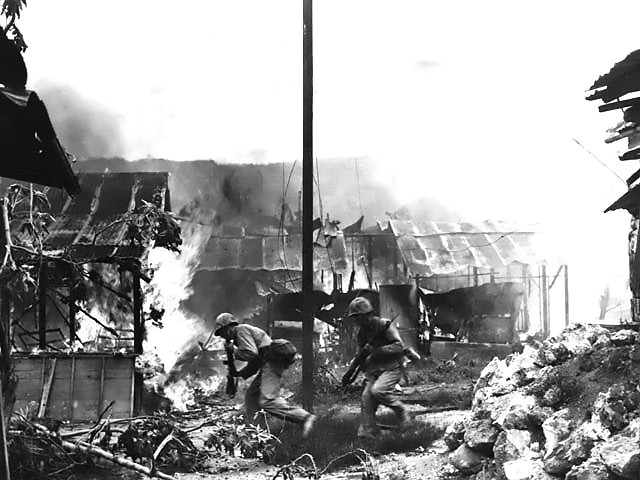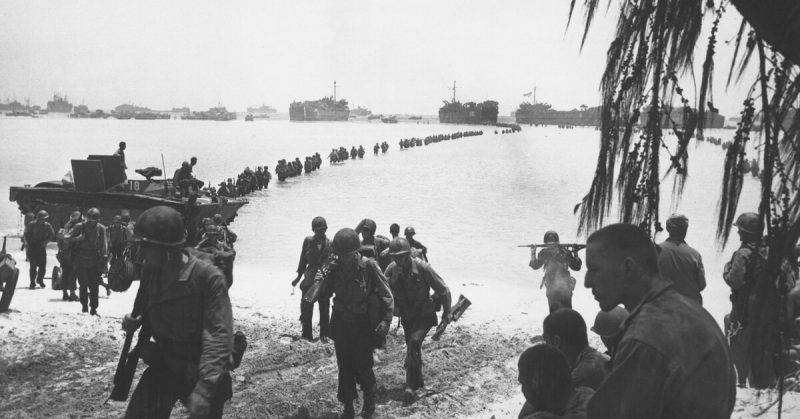In 2012, Marvin Strombo was put in touch with the Obon Society. The non-profit organization out of Oregon connects US veterans with Japanese families so that they can return the flags they took on the battlefields of WWII. In Strombo’s case, they analyzed family names to determine that Sadao Yasue had come from this village of 2,300 people. They were then able to locate his family in the village.
Tatsuya Yasue was overcome with emotion when Strombo personally traveled to Japan to present Sadao’s flag. He claimed that the flag still smelled like his brother and their mother’s home cooking.
Sadao Yasue was 25 when Saipan was captured on July 18, 1944. He had left for the South Pacific from his home in Japan to serve in World War II in 1943. He spent his last day with his brothers and sisters before shipping out. They had a picnic with sushi and sweet mochi. He told his brother, Tatsuya, to watch over their parents. The South Pacific was a dangerous place to be during the war and Sadao knew that the odds were good that he would not return.
When Sadao left his hometown of Higashishirakawa, he took with him his a Japanese flag he had been given for good luck. The white background was covered with well-wishes from 180 family and friends. In 1944, a wooden box was sent to his family. It had some rocks in the bottom because the authorities had not been able to reclaim his body. Months after the war had ended, the Sadao’s family finally received some information from the government about his fate. It is believed he died on that day Saipan fell.
That was all the family ever learned about Sadao’s death. They were not even sure if he had died on land or at sea. Twenty years ago, Tatsuya and his younger brother went to Saipan, trying to understand what their sibling had been through in his last days.
Marvin Strombo was an elite scout-sniper who fought in the Battle of Saipan. During the fighting, he came across a dead Japanese soldier with a white piece of cloth sticking out of his uniform. He instinctively knew it was important and was about to leave it alone. Then he thought that it might be lost forever if he left it, so he took Sadao’s flag while promising to return it to his family one day.

Strombo went on to fight at Tarawa and Tinian, but he held on to the flag. After the war, he displayed it in a glass case. It made for quite the conversation piece at his home. Still, he continued to feel the guilt from taking it and never gave up on his vow to return it.
Obon is a Buddhist event commemorating ancestors. Each year, during Obon, the spirits of the deceased return to visit their relatives.
Almost 1.2 million Japanese soldiers have yet to be repatriated from WWII. Their families have waited over 70 years for closure. The Obon Society helps those Japanese families heal by researching the Japanese flags that were taken by American soldiers as souvenirs. They then return the flags at no cost to the families of the fallen Japanese soldiers.
Strombo not only was able to return the flag and fulfill his vow but he also gave the family hope that Sadao may one day come home from the war. Strombo found Sadao laying on the battlefield outside of Garapan. He had no severe wounds and almost appeared to be sleeping on his side when Strombo found him. Strombo believes that Sadao was killed by the concussion of a mortar shell explosion.
The fact that Sadao did not die at sea and that Strombo was able to tell them the approximate location Sadao had been means that there is hope that his body can be located and returned home to his family. Then the war can finally end for them after seven decades of heartache.
